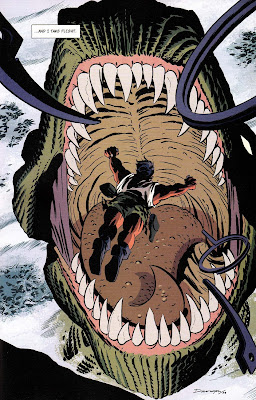
Don't you hate it when you accidentally get Kryptonite vision? As I have commented in the past, Lois Lane comics were my secret vice back in the Silver Age. No guy wanted to admit reading them. I not only read them, but I really enjoyed them.
The first story basically writes itself from the splash panel:

Lois sees how useful it is for Jimmy to have his signal watch, so she asks Superman for one. He resists initially, but as its her birthday, he finally relents. But she continually calls him for minor things like a stuck zipper and a dog chasing a cat, and he starts gettting annoyed. Then, when some crooks capture her and threaten her life, she refuses to signal him, infuriating him even more when he finds out. Finally:

Cute little story, art by Kurt Schaffenberger. There's a silly filler from Henry Boltinoff, featuring Varsity Vic, who's been writing to a Hollywood starlet for two years. When asked what she's like, Vic is forced to admit he doesn't know; she's never written him back.
The second story is The Mystery of Skull Island. Perry has gotten Lois and Clark jobs as maid and butler to a Hollywood couple, so they can get the inside scoop on their marriage. But Lois begins to suspect something is wrong when she never sees the bride, and we see that it's true, her husband is hiding something:

But it turns out that the woman had been killed by her lawyer, and the Hollywood actor had covered it up to find out who was the killer.
Comments: Better than average thriller, with excellent art by Schaffenberger again.
The next feature is a little bit on Teen Talk, which appears to have been completely made up. We learn that a hair raid is a crewcut, a fileboner is a hard-working student, and hip-happy means plump. Maybe when Weisinger was a teen, but not in the early 1960s.
The last story is the cover one, and it's a doozy. Superman leaves some objects with Lois, warning her not to touch them. Of course, she does, and gets the Kryptonite vision shown on the cover. He's pretty exasperated:

Wow, very harsh there. Lois takes off for Alaska, where she is worshiped as a goddess for the green rays coming from her eyes. She teaches Eskimo children. Then Jimmy and Clark show up with an antidote. But Lois is unwilling to let the opportunity to test whether Clark is Superman pass. To her (and our surprise):

That's scuzzy enough, but it turns out that Lois has not drunk the antidote yet; when she does, the green rays go away. And we learn the truth:

That's a horrible trick to play on somebody!























-01-fc.jpg)
-08.jpg)
-10.jpg)
-33.jpg)
















